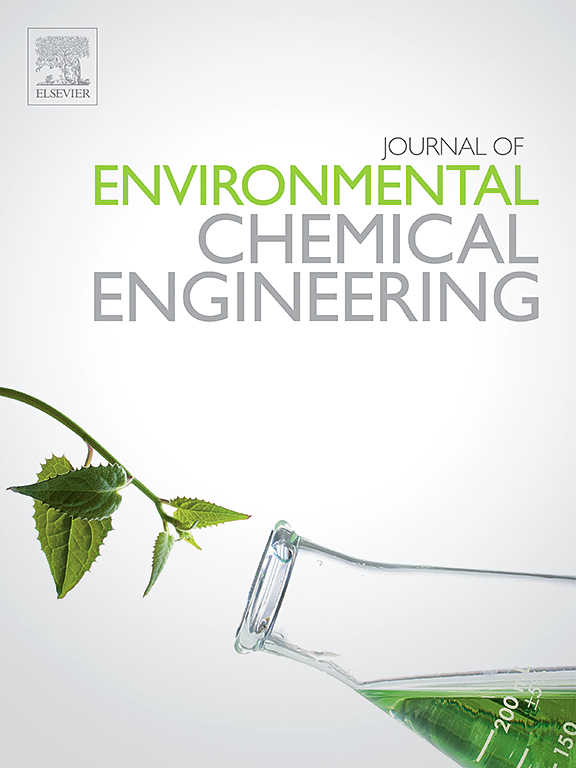Differential insights into the distribution characteristics of archaeal communities and their response to typical pollutants in the sediments and soils of deep-water reservoir
IF 7.4
2区 工程技术
Q1 ENGINEERING, CHEMICAL
引用次数: 0
Abstract
This study focused on the Fengshuba deep-water reservoir in South China, and systematically explored the distribution characteristics of archaeal communities in the sediment and soil in water level fluctuation zones and their response mechanisms to typical pollutants. The results show that Euryarchaeota and Bathyarchaeota are the dominant phyla in sediment archaeal communities, while Thaumarchaeota dominates in soil. The absolute abundance of archaea in the sediments was lower than that in the soils, but the diversity and richness of archaeal communities were higher than those in the soils. Seasonal changes affected the composition of sediment archaeal communities, and the archaeal compositions in the two habitats also showed significant differences. The neutral community model indicates that the assembly of archaeal communities in sediments is mainly governed by stochastic processes, while deterministic processes dominate in soils. The responses of archaeal communities to pollutants in the two habitats were significantly different. Among them, the carbon-nitrogen ratio and tetracycline concentration are the key factors driving seasonal changes in the archaeal communities in the sediment. Structural equation modeling further showed that the archaeal community in the sediment was positively correlated with organochlorine pesticides and antibiotics, while the archaeal community in the soil showed an opposite trend. This study provides new insights into the complexity of interactions between archaeal communities and typical contaminants in reservoir systems.
对深水水库沉积物和土壤中古生物群落分布特征及其对典型污染物反应的不同见解
本研究以华南枫树坝深水水库为研究对象,系统探讨了水位波动区沉积物和土壤中古生物群落的分布特征及其对典型污染物的响应机制。结果表明,沉积物古菌群落的优势菌门为水螅古菌门(Euryarchaeota)和藻类古菌门(Bathyarchaeota),土壤古菌群落的优势菌门为藻类古菌门(Thaumarchaeota)。沉积物中古细菌的绝对丰度低于土壤,但古细菌群落的多样性和丰富度却高于土壤。季节变化影响了沉积物古细菌群落的组成,两种生境的古细菌组成也有显著差异。中性群落模型表明,沉积物中考古群落的形成主要受随机过程的支配,而土壤中则以确定性过程为主。两种生境中的古菌群落对污染物的反应存在显著差异。其中,碳氮比和四环素浓度是导致沉积物中古细菌群落季节性变化的关键因素。结构方程模型进一步表明,沉积物中的古菌群落与有机氯农药和抗生素呈正相关,而土壤中的古菌群落则呈现相反的趋势。这项研究为了解水库系统中古生物群落与典型污染物之间相互作用的复杂性提供了新的视角。
本文章由计算机程序翻译,如有差异,请以英文原文为准。
求助全文
约1分钟内获得全文
求助全文
来源期刊

Journal of Environmental Chemical Engineering
Environmental Science-Pollution
CiteScore
11.40
自引率
6.50%
发文量
2017
审稿时长
27 days
期刊介绍:
The Journal of Environmental Chemical Engineering (JECE) serves as a platform for the dissemination of original and innovative research focusing on the advancement of environmentally-friendly, sustainable technologies. JECE emphasizes the transition towards a carbon-neutral circular economy and a self-sufficient bio-based economy. Topics covered include soil, water, wastewater, and air decontamination; pollution monitoring, prevention, and control; advanced analytics, sensors, impact and risk assessment methodologies in environmental chemical engineering; resource recovery (water, nutrients, materials, energy); industrial ecology; valorization of waste streams; waste management (including e-waste); climate-water-energy-food nexus; novel materials for environmental, chemical, and energy applications; sustainability and environmental safety; water digitalization, water data science, and machine learning; process integration and intensification; recent developments in green chemistry for synthesis, catalysis, and energy; and original research on contaminants of emerging concern, persistent chemicals, and priority substances, including microplastics, nanoplastics, nanomaterials, micropollutants, antimicrobial resistance genes, and emerging pathogens (viruses, bacteria, parasites) of environmental significance.
 求助内容:
求助内容: 应助结果提醒方式:
应助结果提醒方式:


